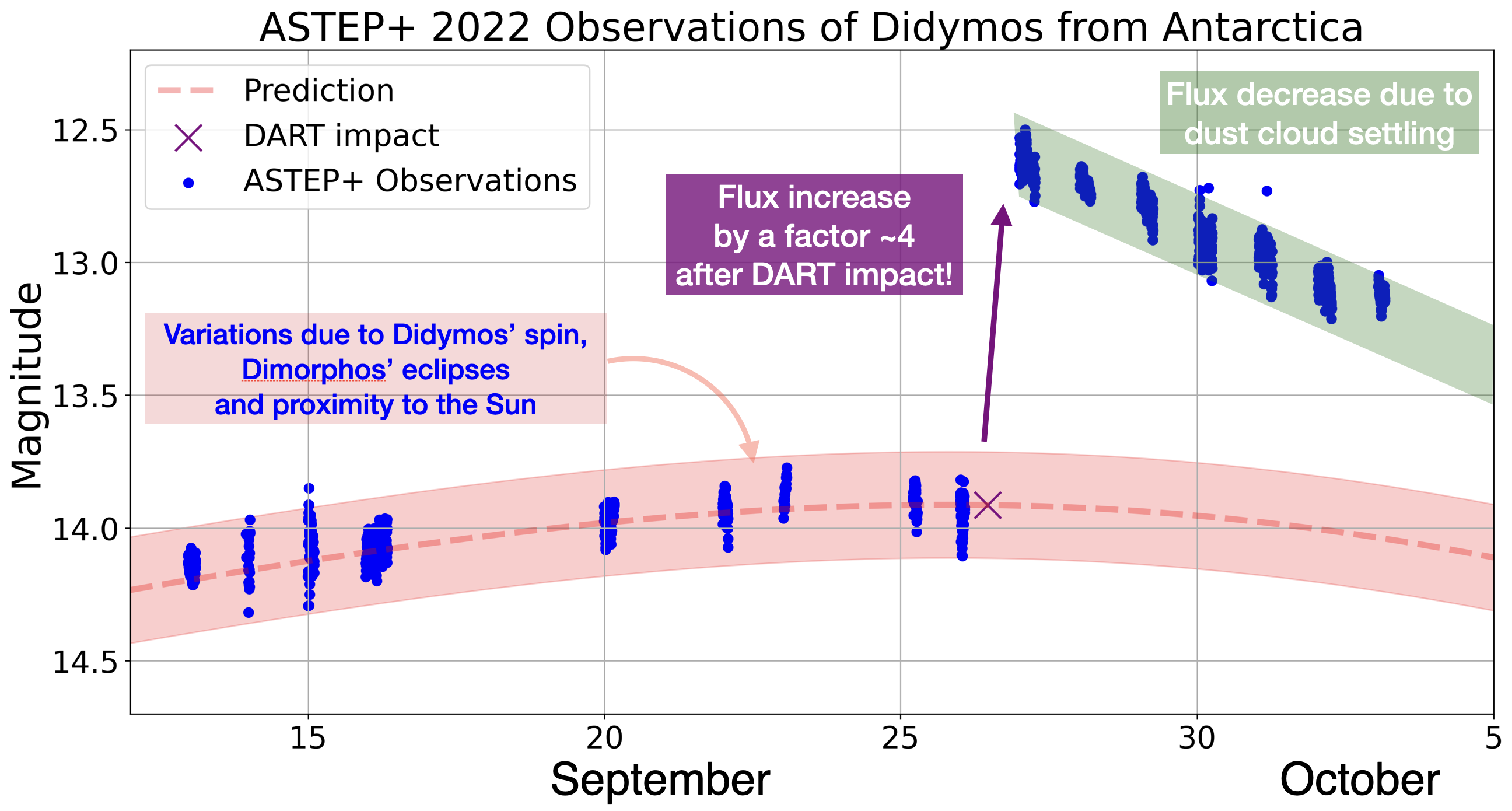
Following the DART impact, ASTEP+ continued its observations of asteroid Didymos to understand the evolution of the system and particularly the settling of the dust and pebbles projected in orbit by the impact. As a result of the increased reflexion of sunlight by the projectiles, the luminosity of Didymos and its small moon Dimorphos had been multiplied by 4! The dust cloud is progressively settling, probably mostly because of reaccretion by the asteroid couple. The luminosity decreases with a timescale of a week, at a rate of 0.09 magnitudes per day.
It is worth pointing the excellent weather conditions in this exceptional site: On the figure below, the interruptions of the observations were due to the sky becoming too bright (it's not permanent night time anymore at Concordia!) or to other observations of important transiting exoplanet candidates from the TESS program. But all good things have an end: After a very successful 2022 campaign, the winter nights in Antarctica have become too short and too bright for astronomical observations. But our observation season will resume in March 2023. Stay tuned!
ASTEP+ is a telescope based at the Concordia Station, Antarctica which is operated by IPEV and PNRA. The ASTEP+ observations were possible thanks to support from INSU, Observatoire de la Côte d'Azur, Université Côte d'Azur, University of Birmingham, ESA.
Tristan Guillot
(Data analysis from Lyu Abe and the ASTEP+ team)




